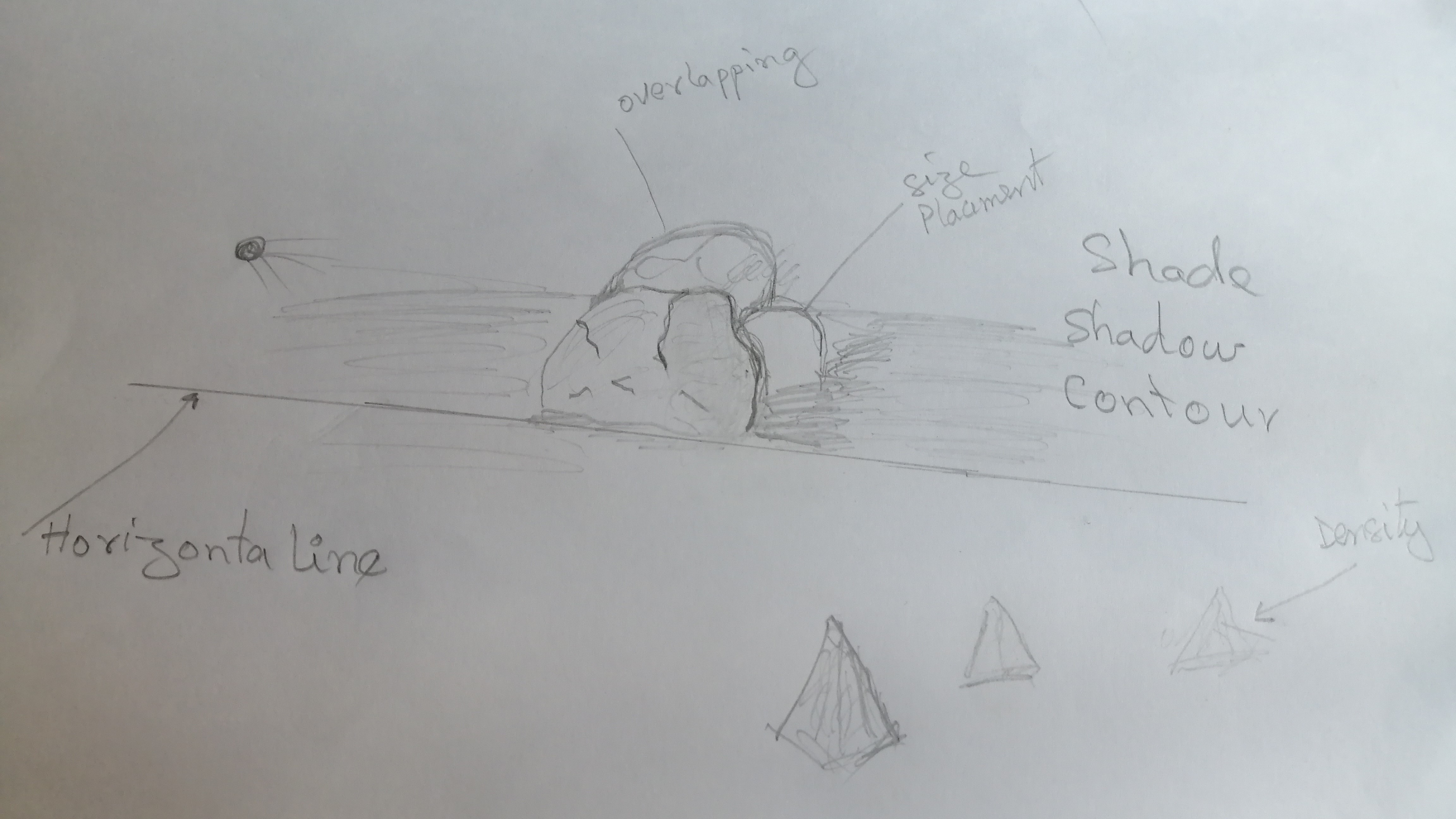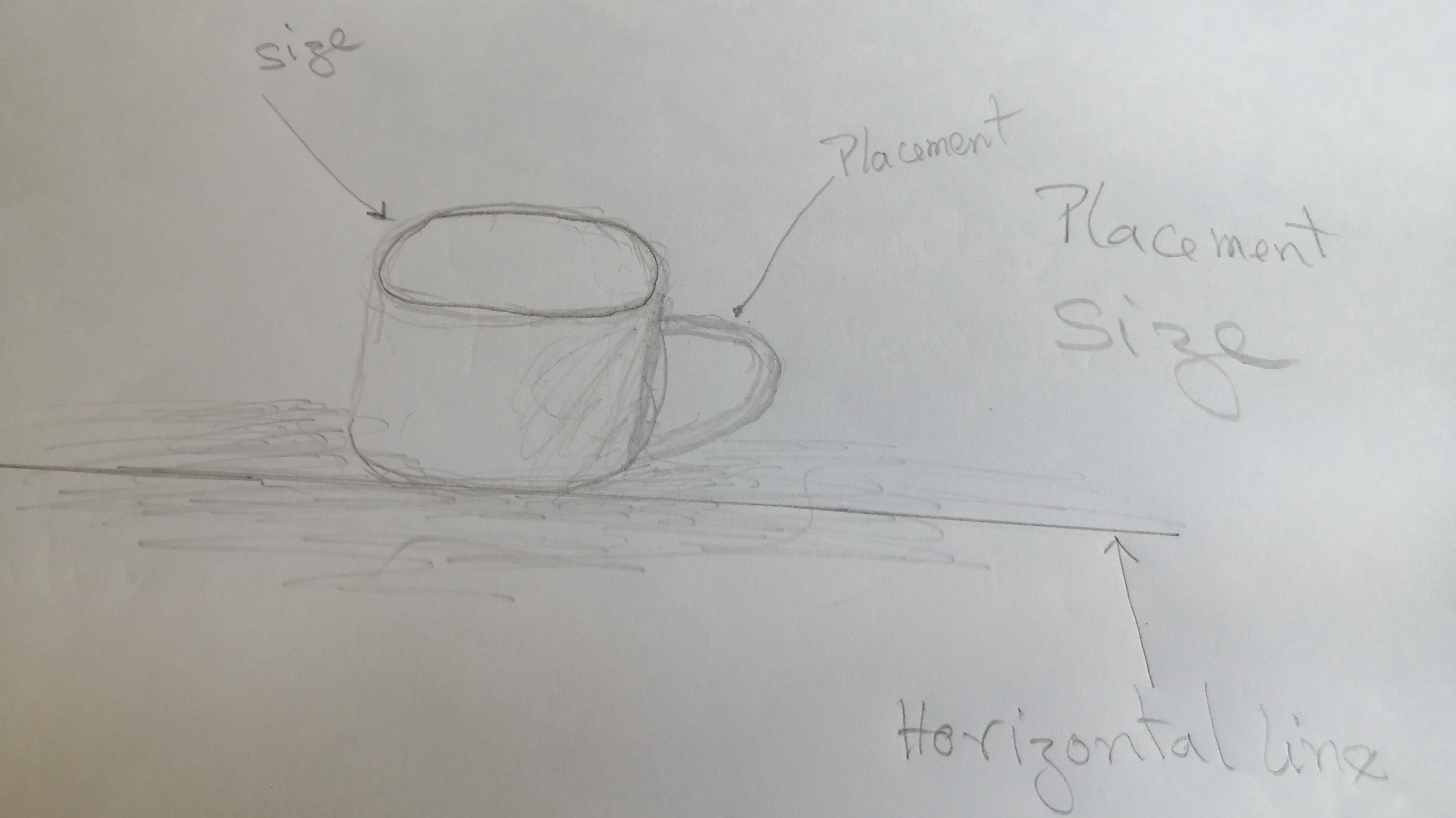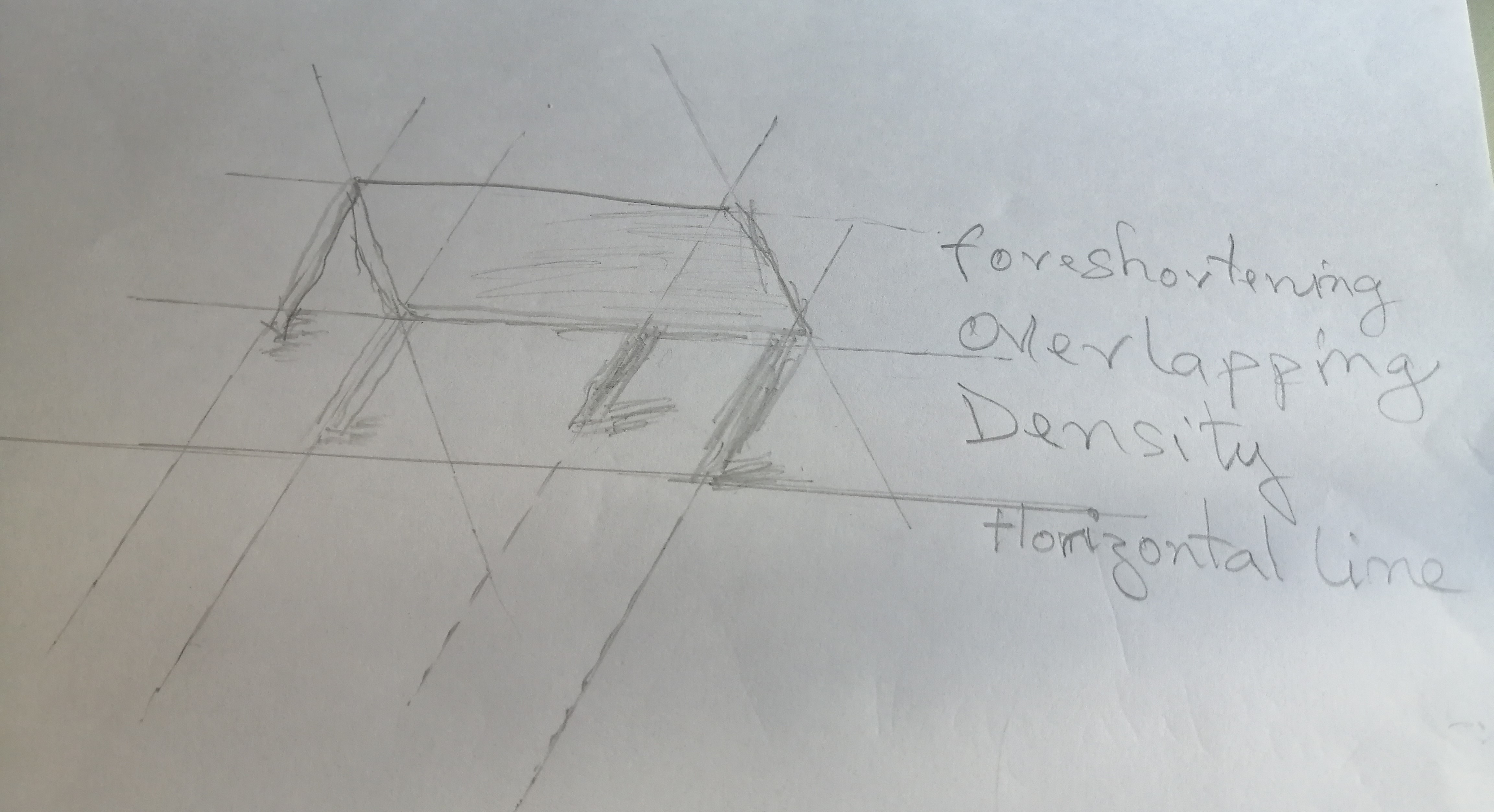On a paper
Our perception of things around us is a wonderful gamble between light and our eyes. Nature has its subtle ways of disposing things, and our eyes their own ways of perceiving them. As we grow we start to admit to the fact that some things have to appear a certain way under certain circumstances and certain conditions. It's what things look like.
When we decide to imitate nature and deceive our eyes to believe ourselves we have to learn how to use the same rules and principles used by nature and our eyes
In this course, I am taking you through 9 drawing fundamental rules by Mark Kistler that help us to create realistic images.

Rule 1: Foreshortening
This rule allows us to distort an object in order to have a feeling that part of it is closer to the viewer.
Rule 2: Overlapping
This rule allows us to extend an object or part of it to make it look closer to the viewer.
Rule 3: Placement
With this rule, we place objects in front of others to make them look closer to us.
Rule 4: Shade
Shading gives the object the skin and makes it look realistic

Rule 5: Shadow
The shadow shows the position of the source of the light that shines on the scene. It gives it the feeling of belonging to the natural order.
Rule 6: Contour
The contour line shows the limits, shapes, and forms of the object.
Rule 7: Horizon and horizontal line
It serves as the basement of the composition and also creates the space. It creates the difference between space and the ground.
Rule 8: Size
Sizing helps differentiate the different elements of the composition. It also helps to create good placement and overlapping. The bigger the object the closer they look to us and vice-versa.
Rule 9: Density
Density is defined in various degrees to position an object either closer or far. The lighter the density the further the object look and vice-versa
